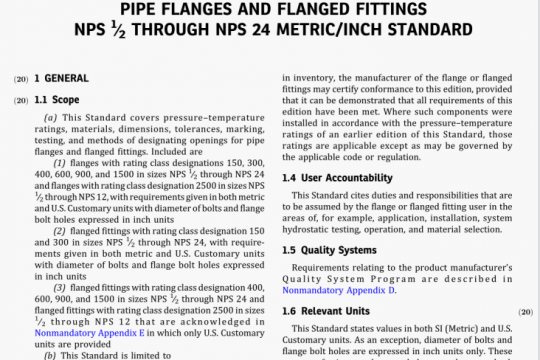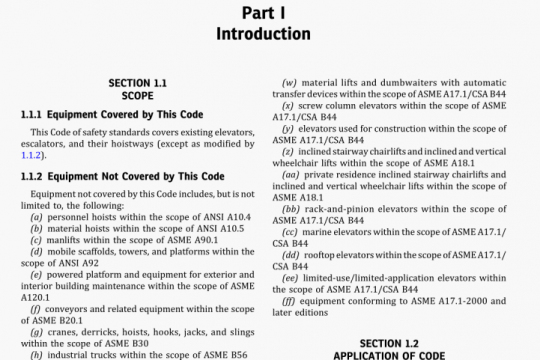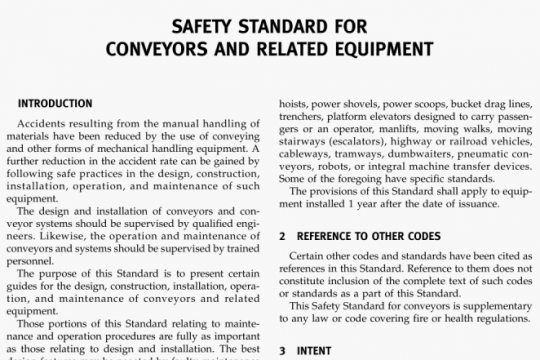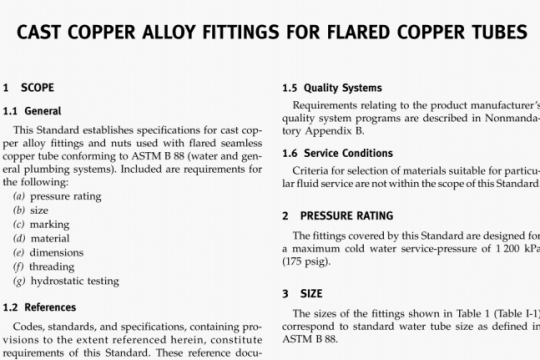ASME HST-6-2015 pdf free
ASME HST-6-2015 pdf free.Performance Standard for Air Wire Rope Hoists.
ASME HST-6 establishes performance requirements for air wire rope hoists for vertical lifting service involving material handling of freely suspended (unguided) loads using wire rope as the lifting medium with one of the following types of suspension:
(1) lug
(2) hook or clevis
(3) trolley
(4) base or deck mounted (does not include winches of the type covered by ASME B30.7)
(5) wall or ceiling mounted (does not include winches of the type covered by ASMI 1330.7)
(b) This Standard is applicable to hoists manufactured after the date on which this Standard is issued. It is not applicable to the following:
(1) damaged or malfunctioning hoists
(2) hoists that have been misused or abused
(3) hoists that have been altered without authorization of the manufacturer or a qualified person
(4) hoists used for lifting or supporting people
(5) hoists used for the purpose of drawing both the load and the hoist up or down the hoist’s own wire rope
(6) hoists used for marine and other applications as required by the US. Department of Defense (IX)D)
(c) The requirements of this Standard shall be applied together with the requirements of ASME B30. 16. Please also refer to ASME B3016 for requirements pertaining to marking, construction, and installation; inspection. testing, and maintenance; and operations.
abnormal operating conditions: environmental conditions that are unfavorable, harmful, or detrimental to the operat ion of a hoist, such as excessively high or low ambient temperatures, exposure to weather, corrosive fumes, dust-laden or moisture-laden atmospheres, and hazardous locations.
ambient frrnperature: the temperature of the atmosphere surrounding the hoist.
or deck ,nounted: a type of mounting when the hoist is mounted to the top side of a horizontal supporting surface.
beam: an overhead standard structural or specially fabricated shape on which the trolley operates.
brake: a device, other than a motor, used for retarding or stopping hoist or trolley motion by friction or power means.
brake, holding: a friction brake for a hoist that is automatically applied and prevents motion when the air supply is interrupted.
brake, mechanical load: an automatic type of friction brake used for controlling loads in a lowering direction. This unidirectional device requires torque from the motor to lower a load, hut does not impose additional load on the motor when lifting a load.
ceiling mounted: a type of mounting where the hoist is mounted to the underside of a horizontal supporting surface.
chain, hand: the chain provided to control movement of a hand-chain-operated trolley.
control actuator: a manual means at the operator station by which hoist or trolley controls are energized.
control braking means: a method of controlling speed by removing energy from the moving body or by imparting energy in the opposite direction.
braking, dnaniic: a method of controlling speed by using the motor as a compressor.
braking, mechanical: a method of controlling or reducing speed by friction.
control, pendant: a valve system, connected to the hoist or trolley by hoses, that either directly controls flow ol air to the motor or controls a pilot-operated valve system at the motor inlet.
control, pull: cords or chains suspended from the hoist by means of which a valve system on the hoist can be operated.
control, rod: a rigid rod suspended from the hoist with which a valve system on the hoist can be operated.ASME HST-6 pdf download.




